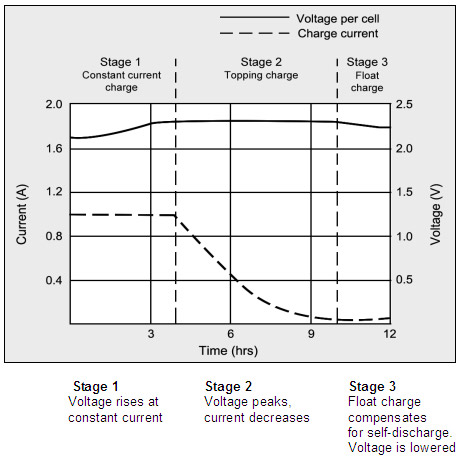Given a battery with a certain capacity C (in Ah) and given a certain charging current Ich (in A), how I can calculate the charging time?
-
\$\begingroup\$ .. and given the chemistry of the battery, it's also possible to tell if it will blow up or not at given C and I_ch. What's the battery chemistry? \$\endgroup\$– Nick AlexeevCommented Jul 9, 2013 at 7:48
-
2\$\begingroup\$ By the way, batteryuniversity.com is a thorough and systematic web site dedicated to battery issues. Please read through it. \$\endgroup\$– Nick AlexeevCommented Jul 9, 2013 at 7:51
2 Answers
Charging time depends on a very large number of factors and so capacity and current are insufficient information to make a good calculation. For example, for a typical lead-acid battery you don't charge beyond 75% capacity at a constant current.
You can trade off battery lifetime against charging time. The appropriate charging current isn't arbitrary, A 100 A charging current won't charge a battery 1000 times faster than a 100 mA charging current, in part because heating the battery affects the charging process and capacity.

From Battery University
Many people do use a rule of thumb for lead-acid batteries that assume 80% charging efficiency and simply divide capacity in amp-hours by charging current in amps and add about 20%. Realistic charging efficiencies can vary considerably.
See also Peukert's law.
For other types of battery chemistry, different rules apply.
Divide C by Ich. Example: C = 20Ah, I=1A => 20h
Also, charging current might be given as a ratio of C. In this case it would be marked as 0.5C.
Edit: Manufacturers give a C rating = capacity in amp-hours. That says nothing about the actual charge or discharge current. Then they might give a ratio of C for charging and a different figure for discharging.
For example, RC LiPo batteries might have 35C discharge rate and 2C charge rate. So if you have a 2000mAh battery you can discharge it at 70A and charge it at 4A.
For lead-acid ones you typically get crank current (~15C) for a few seconds, normal operation discharge current (might be 1C) and charge current (typically 0.1C).
-
\$\begingroup\$ Can you explain better "Also, charging current might be given as a ratio of C. In this case it would be marked as 0.5C." Thank you. \$\endgroup\$– MarkCommented Jul 9, 2013 at 7:26
-
\$\begingroup\$ Isn't this the discharge time you have calculated? \$\endgroup\$– Andy akaCommented Jul 9, 2013 at 7:27
-
-
\$\begingroup\$ Also, the OP clearly says charging current. I don't understand why my answer which is correct and informed is being downvoted. \$\endgroup\$ Commented Jul 9, 2013 at 17:24
